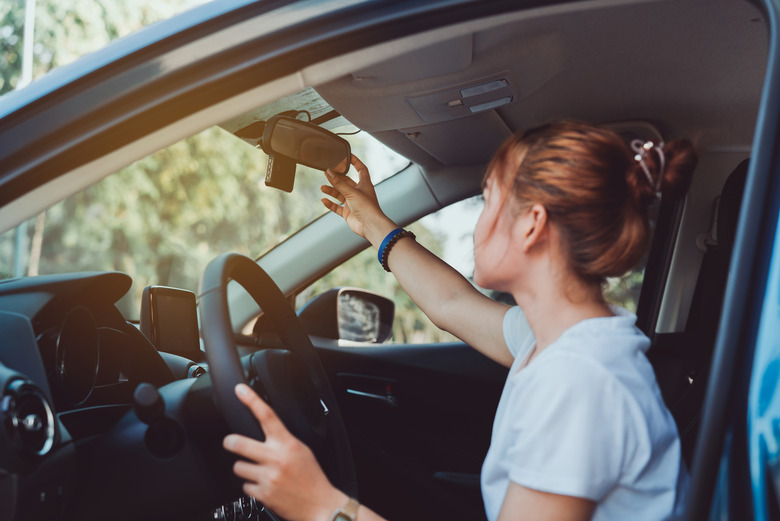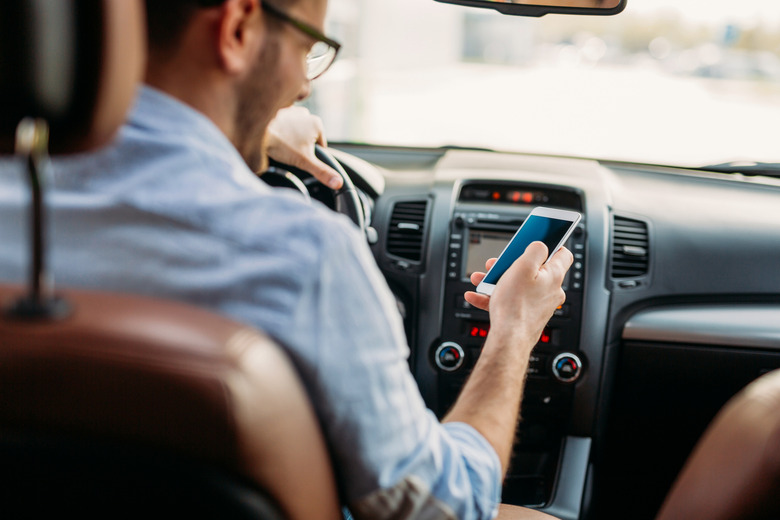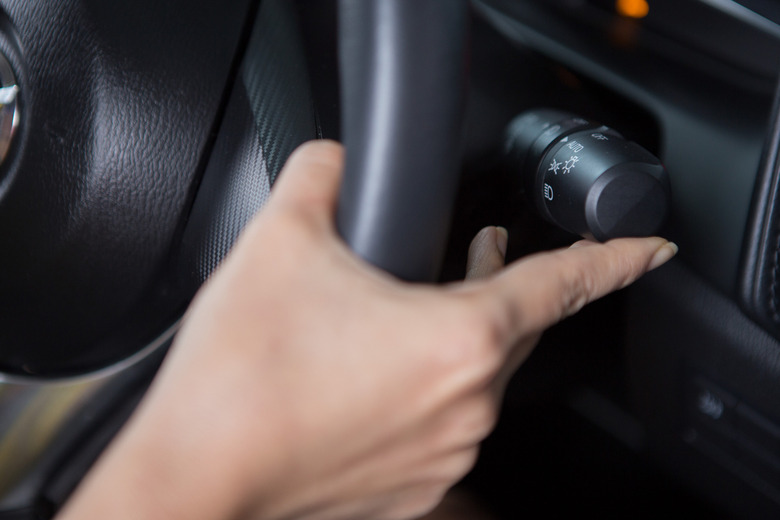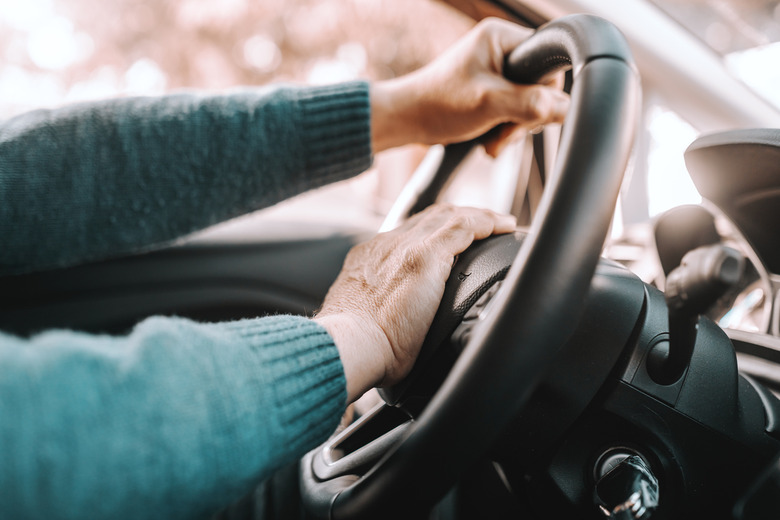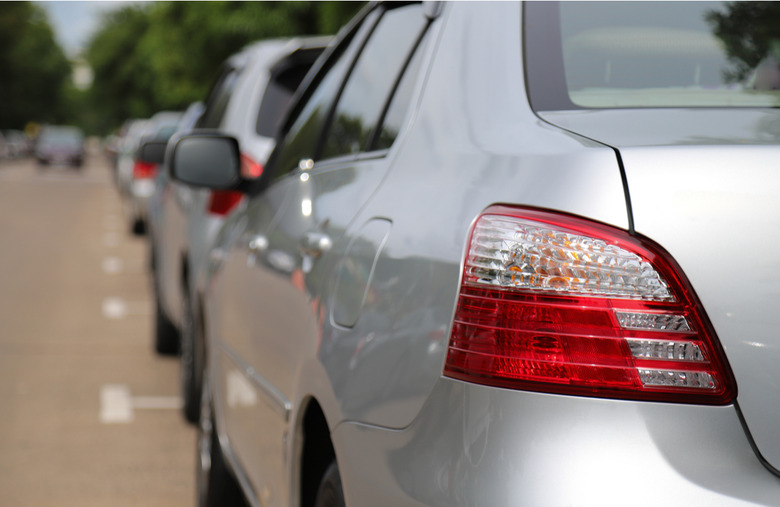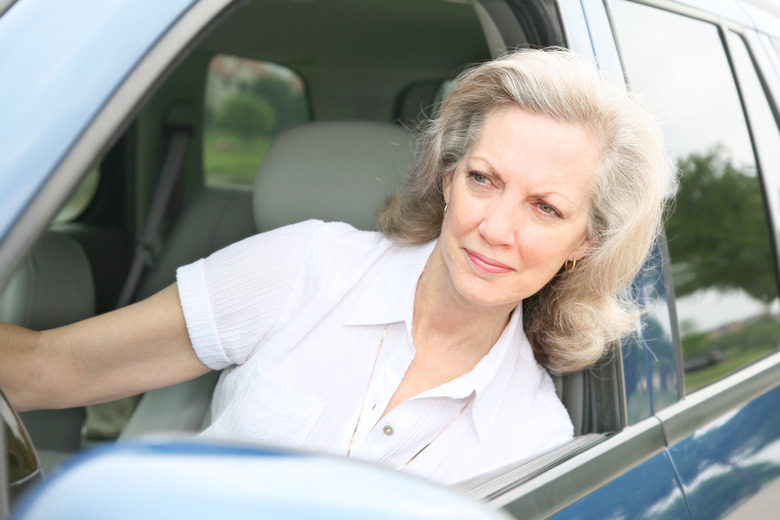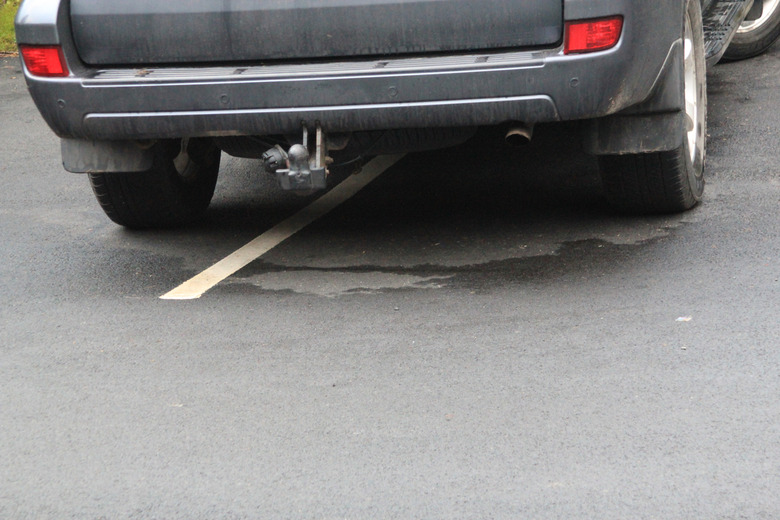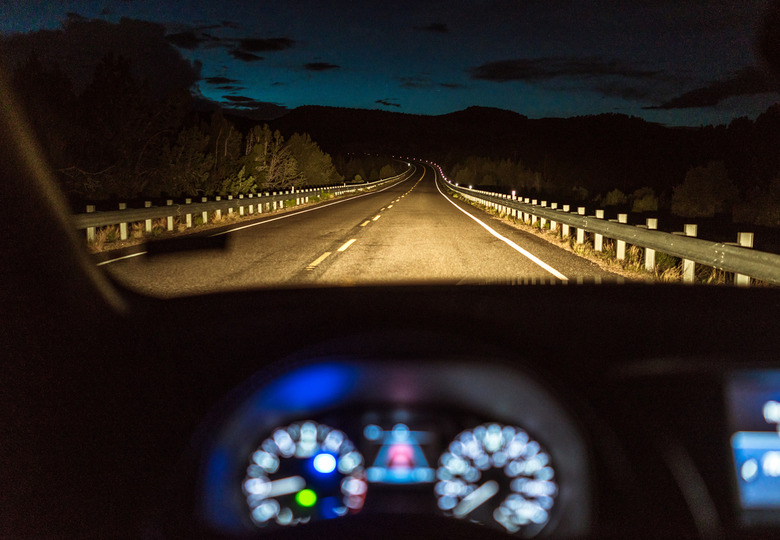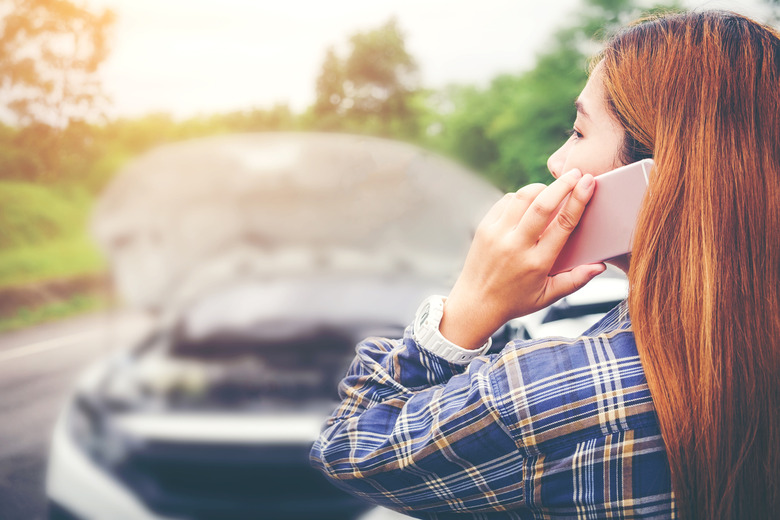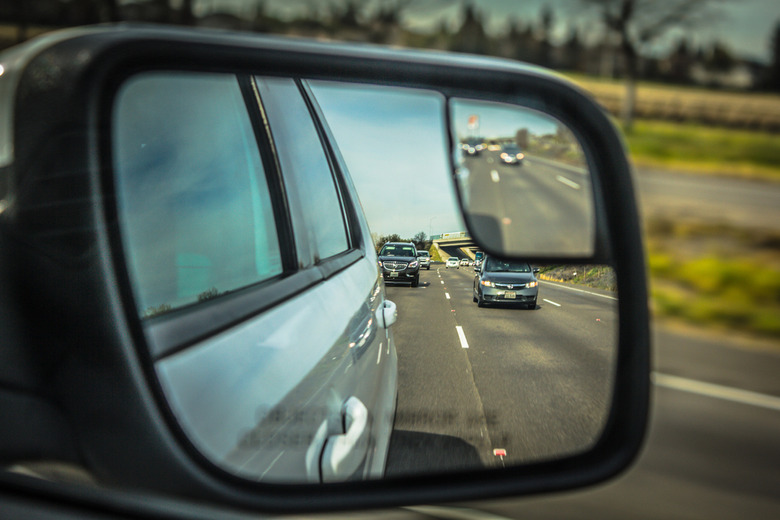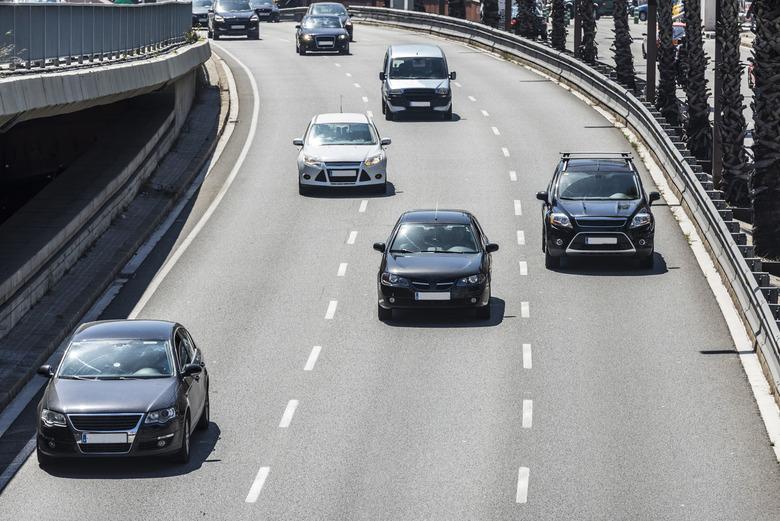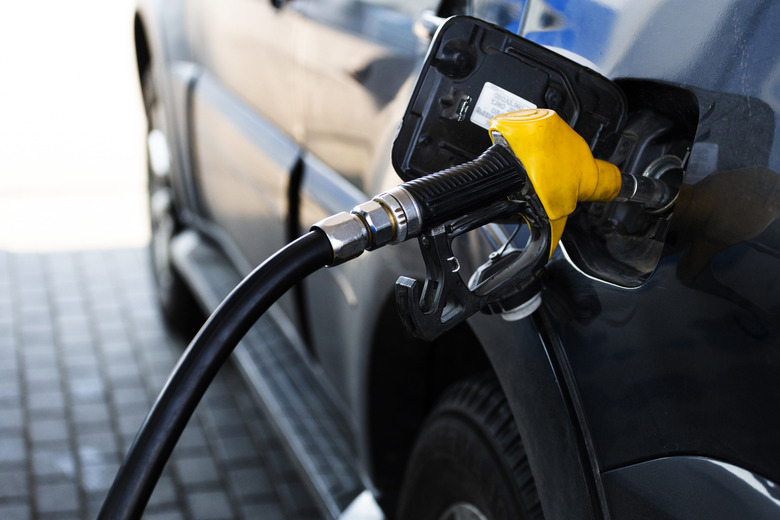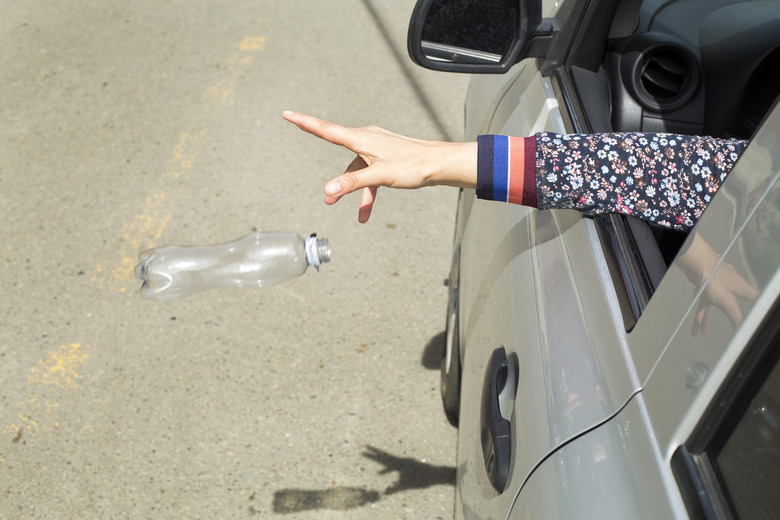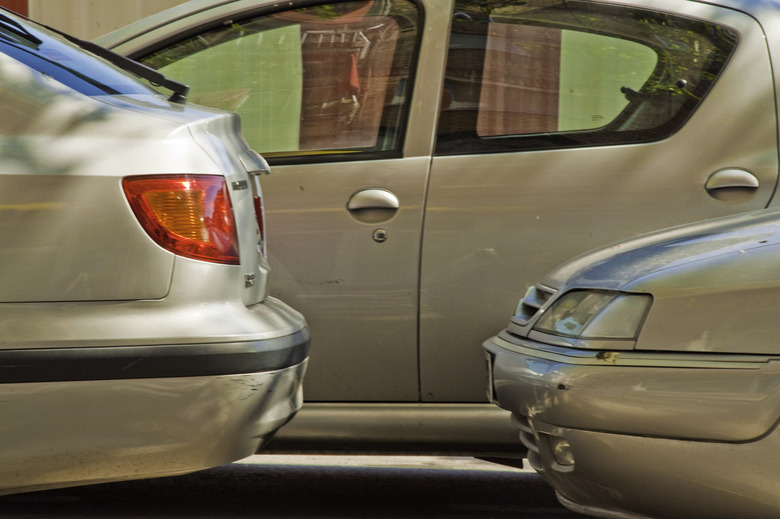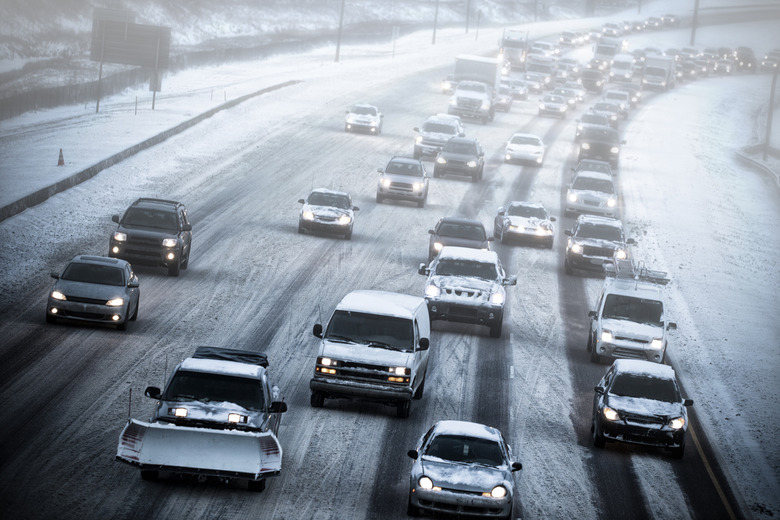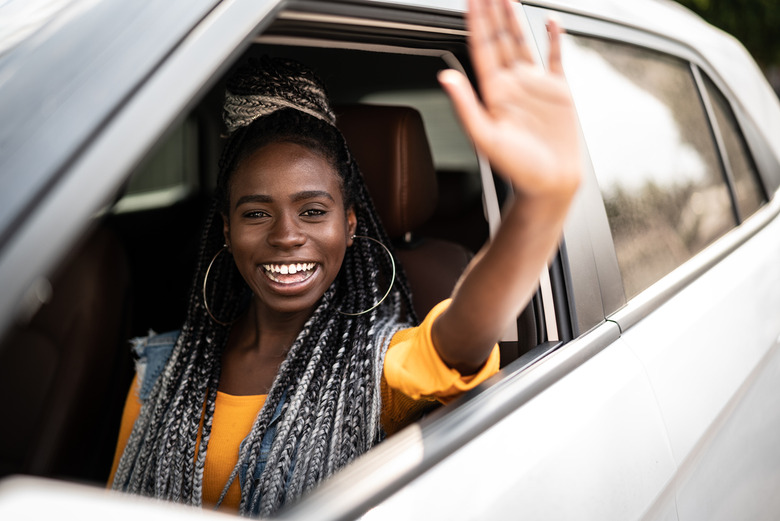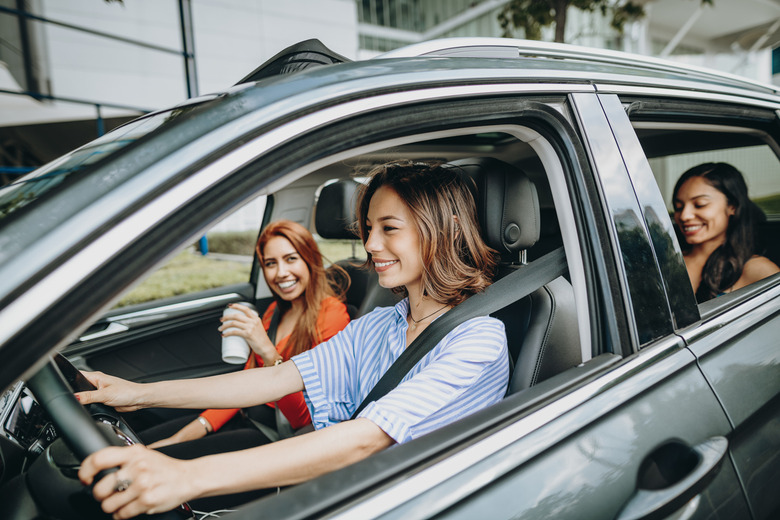Rules Of The Road You Need To Know Before Getting Into A Car
Honking horns, glaring lights and powerful pedals are just a few of the many things that can make getting behind the wheel stressful. Drivers can get so caught up in their own frustrations, fears and need to get from point A to point B that they forget about proper driving etiquette. Whether traffic makes your commute time a disaster or someone cuts you off, it's important to remember that driving involves patience, and that sharing the road is key to becoming a respectable driver.
Keep your eyes on the road
Keeping your eyes on the road may seem like an obvious rule, but it's not happening. The National Safety Council reported 2,841 deaths due to distracted driving in the U.S. in 2018. Cell phones not only have a huge impact on your health, but they are also incredibly distracting while driving. It may be tempting to answer a text message or use the GPS when you're already on the road, but small tasks can interfere with your ability to respond physically and mentally when behind the wheel.
Use your turn signals
This is another one that may seem obvious considering it is a staple rule of the road, yet many times it is ignored. Turn signals are there for you to alert fellow drivers that you will be changing lanes, getting off at an exit or making right or left turns. The driver behind you can't read your mind, so not only is failing to signal one of the worst etiquette mistakes you can make, but it could also cause an accident.
Don’t lean on the horn
The car horn is not there to honk each time someone frustrates you. Don't be that person who hits the horn the second a light turns green. Be respectful and only use the horn if someone is potentially at risk, and maybe take some "me time" to decompress if you find yourself honking all the time. Short beeps as a heads-up to other drivers or pedestrians are OK, according to etiquette expert Emily Post — just don't be obnoxious.
Don’t tailgate
Not only is riding too closely behind someone annoying to the person you're tailing, but it could also trigger the driver's anxiety. You should make sure there is enough space between you and the driver ahead of you so that you can avoid a collision if the other car makes a sudden stop. According to the Department of Motor Vehicles, drivers should follow the two- or three-second rule. That means selecting an object on the road ahead like a sign, and as the vehicle in front of you passes it, you count slowly to two or three. If you reach the same object before you finish the count, you are following too closely. The count should be even longer in poor weather conditions.
Stop rubbernecking
Rubbernecking is when you slow down to get a good look at something (like an accident or one of the coolest roadside attractions in America), interrupting the flow of traffic. If it's an accident, you may also be causing a hindrance to police or other safety personnel who are trying to help the situation. This is definitely a one of the modern etiquette rules you should know about.
Don’t take up more than one parking space
Driving etiquette doesn't stop when you're done driving. There are proper etiquette rules you should try to abide by when parked, too. It is rude to other drivers if you take up more than one parking space. Or on the flip side, if you drive a large vehicle, don't try to cram into a compact space. Don't just keep your vehicle away from available spaces you aren't using, don't loiter in them either. There isn't a law to prevent this one, but standing in an available parking spot is impolite to drivers looking to park.
Turn off your high beams when necessary
High beams are great on dark roads, but it is important to stay aware of cars around you. Turn off your beams whenever a car is approaching or if you're following another vehicle to avoid shining the bright light in their eyes.
If you witness a crash, don’t practice the bystander effect
If you witness an accident or someone stranded in their car, you shouldn't assume that someone has already called for emergency services. That assumption is known as the "bystander effect," which claims that the greater the number of bystanders that are present during an incident, the less likely an individual is to help someone in distress. Instead, it's best to just call the emergency number yourself and stop in case anyone may need your help.
Let cars merge
Driving isn't a competition, so it's not necessary to accelerate if another car is trying to pass you. If you notice a car trying to pass or merge into your lane, just let them. This way you can avoid causing an accident or adding stress to your body.
Don’t merge at the last minute
There are two sides to every merging story. Your fellow driver will hopefully be courteous and let you merge, so give them the same respect and don't do it at the last minute. Pay enough attention to know that your exit is coming up by reading the signs, or wait until there is enough room between cars as to not cause frustration. If you're making this mistake, you're likely breaking other little known etiquette rules.
Don’t be a gas pump hog
Anyone who has tried to quickly get gas so they're not late for work knows that gas pumps can get crowded at the most inconvenient times. So if you know that you plan to use the restroom or grab a tasty cup of joe after you fill your tank, be considerate and park your car somewhere other than at one of the pumps.
Don’t litter
According to the National Conference of State Legislatures, violators in minor littering cases may face a fine or be ordered to participate in community service. But the laws might be much more harsh in other parts of the country. A first-time fine is $50-$200 in Colorado's majestic mountains, but it runs up to $1,500 in Maryland. That's a lot of blue crab.
Don’t double-park
Double-parking is when a car parks beside another car that is parked alongside the curb. It is illegal in most states, and this is an action that can affect both the driver and traffic. You're blocking the way for a person to enter into their car or for a car to move out of the space. It also can cause street congestion, especially if the street is narrow.
Slow down in bad conditions
It's necessary to drive slower when it's raining or snowing to avoid hydroplaning under heavy rainfall or spinning out on black ice.
Show gratitude
You don't need to bring back the old etiquette of writing a handwritten note to thank someone for letting you merge, but it is nice to show your appreciation when someone makes room for you. A simple wave is thank you enough.
Be considerate to passengers
It is important to be polite to fellow drivers on the road, but good driving etiquette also means being conscious of the passengers inside your vehicle. According to Emily Post, you should make sure your passengers are comfortable with the temperature, the volume of the radio and the music being played. If you're going on a long drive, there are plenty of road trip games your passengers can play to make the ride more fun. Now that you understand the possible mistakes you can make while driving, here are some etiquette mistakes you need to stop making by age 30.
